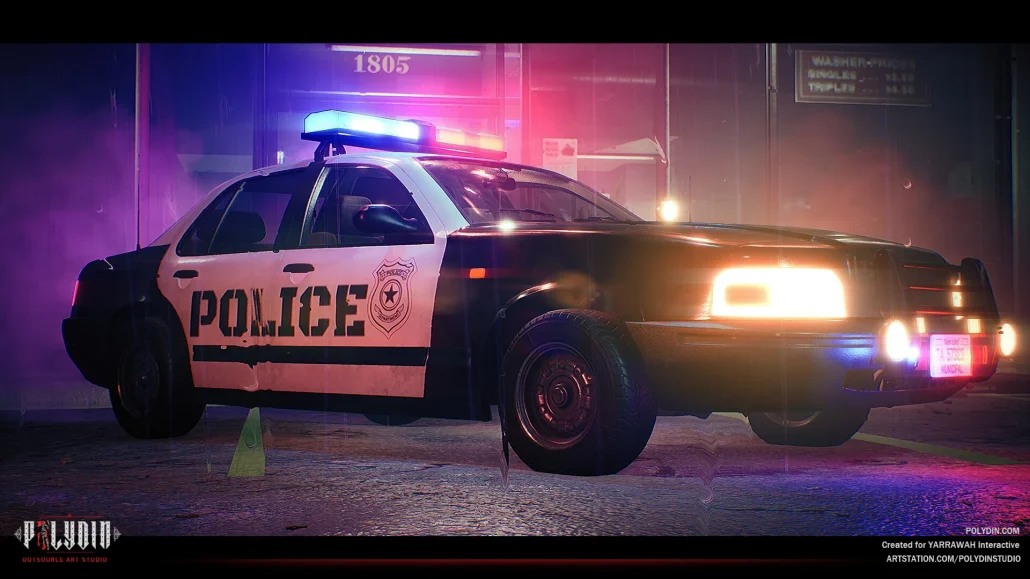Embarking on a high-speed journey through the world of gaming, racing game mechanics hold a unique allure with their adrenaline-pumping experiences and immersive mechanics. What transforms a racing game from good to great? This exploration delves into the intricacies that define exceptional racing games, dissecting the components that fuel the thrill of the race.
From the historical evolution of racing games to the most common racing game mechanics that keep players on the edge of their seats, we navigate through the circuits of game development. Unveiling the essential components and discussing the pivotal choice of game engines, we aim to unravel the secrets behind crafting an exhilarating racing game. So, buckle up as we rev our engines and navigate the twists and turns of what makes a racing game truly remarkable.
What Makes a Great Racing Game?
A great racing game is a fusion of speed, strategy, and immersive experiences that captivate players from start to finish. Beyond the thrill of high-speed races, several key elements contribute to the greatness of a racing game. Firstly, realistic and dynamic physics play a crucial role, allowing vehicles to respond authentically to different terrains and driving conditions. The sense of speed is enhanced by detailed graphics and environments that bring the race tracks to life. Engaging gameplay mechanics, such as skillful drifting, strategic use of power-ups, and challenging AI opponents, add layers of excitement and replayability.
Moreover, a diverse range of vehicles and customization options allows players to personalize their racing experience, catering to different playstyles. An immersive audio experience, including realistic engine sounds and dynamic background music, further enhances the sense of being in the driver’s seat. Finally, a great racing game often incorporates a compelling progression system, whether through a captivating storyline or a rewarding career mode, providing players with a sense of accomplishment and a reason to keep pushing the pedal to the metal. The combination of these elements transforms a racing game into an unforgettable and exhilarating gaming experience.
Components of Racing Games
Racing games, like finely tuned machines, consist of various components that seamlessly come together to deliver an immersive and exhilarating experience. At the core lies the game’s physics engine, responsible for rendering realistic vehicle dynamics, ensuring that each turn, skid, and acceleration feels authentic. Graphics and visual effects play a pivotal role in creating vibrant and detailed race environments that enhance the overall visual experience.
Vehicle diversity is another key component, offering players a range of cars, bikes, and even unconventional vehicles to choose from, each with unique handling characteristics. Customization options, from paint jobs to performance upgrades, add a personal touch to the player’s chosen ride. The inclusion of dynamic weather and day-night cycles intensifies the challenge, requiring adaptability as racing conditions evolve. Additionally, robust AI systems contribute to the competitiveness of races, creating challenging opponents that demand strategic driving.
Multiplayer functionality elevates the experience, allowing players to compete against friends or a global community, fostering a sense of competition and camaraderie. Finally, an engaging progression system, whether in the form of career modes or intricate storylines, provides a purposeful journey for players as they conquer tracks, unlock new vehicles, and strive for victory. In harmony, these components propel racing games into the fast lane of gaming excellence.


History of Racing Games
The history of racing games traces a thrilling journey through the evolution of technology and gaming preferences, reflecting the ever-growing fascination with speed and competition. The roots can be traced back to the early days of arcade gaming in the 1970s when titles like “Gran Trak 10” and “Night Driver” introduced simplistic representations of racing. However, it was the release of Namco’s “Pole Position” in 1982 that marked a significant leap, introducing a pseudo-3D perspective and a realistic racecourse.
The 1990s witnessed a surge in popularity with the advent of 3D graphics and advancements in home gaming consoles. Iconic titles like “Super Mario Kart” and “Need for Speed” captured the attention of a diverse gaming audience, blending fun and realism. The era also saw the rise of realistic racing simulations like “Gran Turismo,” offering unparalleled attention to detail in terms of car physics and graphics.
As technology continued to advance, the 2000s brought about a convergence of online gaming and racing, with titles like “Mario Kart: Double Dash” and “Burnout 3: Takedown” introducing multiplayer elements. The genre further diversified with the introduction of open-world racing games like “Grand Theft Auto: San Andreas” and the immersive storytelling of “Forza Motorsport.”
In recent years, racing games have embraced virtual reality, providing an unprecedented level of immersion. Games like “Assetto Corsa Competizione” and “Dirt Rally” exemplify the pursuit of realism in both visuals and gameplay. The advent of e-sports has also transformed racing games into competitive platforms, with events like the FIA Gran Turismo Championships drawing global participation.
Today, racing games continue to push boundaries, combining cutting-edge graphics, realistic physics engines, and expansive multiplayer experiences. From nostalgic arcade classics to sophisticated simulations, the history of racing games is a testament to the enduring appeal of the need for speed in the world of gaming.
Most Common Racing Game Mechanics
Racing games, as a genre, encompass a range of game mechanics that contribute to the overall excitement and engagement of the player. These mechanics not only simulate the physics of real-world racing but also introduce elements that enhance the gaming experience. Here are some of the most common racing game mechanics:
- Realistic Physics Engine:
- Simulates authentic vehicle dynamics, tire traction, and handling.
- Vehicle Customization:
- Personalize rides with custom paint, performance upgrades, and modifications.
- Dynamic Environments:
- Features diverse landscapes, weather conditions, and day-night cycles.
- AI Opponents:
- Competent and challenging opponents adapt to the player’s skill level.
- Multiplayer Functionality:
- Enables competitive races against friends or a global community.
- Progression Systems:
- Guiding players through purposeful journeys with career modes and storylines.
- Power-ups and Boosts:
- Introduces strategy with advantages or obstacles during races.
- Rewind Feature:
- Allows players to undo mistakes or crashes for a do-over.
- Drifting Mechanics:
- Rewards skillful drifting for navigating turns with finesse.
- Damage and Repair Systems:
- Incorporates damage from collisions and repair systems for continued racing.
Which Game Engine to Use for Racing Games?
Selecting the appropriate game engine is crucial for the development of racing games, as it significantly influences the game’s performance, visuals, and overall user experience. Several game engines are well-suited for creating compelling racing game experiences. Here are some notable options:
- Unity:
- Renowned for its versatility, Unity is a popular choice for racing game mechanics. It provides a robust development environment, supports realistic physics simulations, and offers a vast asset store for additional resources.
- Unreal Engine:
- Unreal Engine is celebrated for its high-quality graphics and advanced visual effects. It offers powerful tools for creating lifelike environments, making it suitable for both arcade-style and realistic racing simulations.
- CryEngine:
- Known for its stunning visuals and detailed environments, CryEngine is a viable option for developers aiming to create visually impressive racing games. It excels in rendering realistic lighting and reflections.
- Godot Engine:
- An open-source option, Godot Engine provides flexibility and ease of use. It supports 2D and 3D game development, making it suitable for developers working on various types of racing games.
- Amazon Lumberyard:
- With a focus on community-driven development, Amazon Lumberyard integrates seamlessly with Amazon Web Services. It is capable of handling complex graphics and physics, making it suitable for ambitious racing projects.
- rFactor Engine:
- Specifically designed for racing simulations, the rFactor engine is favored by developers aiming to create realistic racing experiences. It emphasizes accurate physics and vehicle dynamics.
Ultimately, the choice of the best game engines depends on the specific requirements and goals of the racing game mechanics being developed. Factors such as graphical fidelity, physics simulation, and the development team’s familiarity with the engine play crucial roles in making the right decision.


Innovations in Modern Racing Game Mechanics
Modern racing games have seen significant innovations in game mechanics, offering players a more immersive and dynamic gaming experience than ever before. One notable innovation is the introduction of realistic physics engines, which simulate vehicle handling, tire grip, and aerodynamics with unprecedented accuracy. This allows players to feel the thrill of high-speed racing while navigating challenging tracks and adapting to changing road conditions. Additionally, advancements in graphics technology have enabled developers to create stunningly realistic environments and lifelike vehicle models, further enhancing the sense of immersion and realism. Another innovation is the integration of online multiplayer modes, which allow players to compete against each other in real-time races, join virtual racing communities, and participate in global leaderboards and tournaments. Furthermore, racing games have embraced open-world design principles, offering expansive virtual environments where players can explore, discover hidden secrets, and engage in a variety of activities beyond traditional racing.
The Role of AI in Racing Game Mechanics
Artificial intelligence (AI) plays a crucial role in shaping the gameplay experience and driving the realism of racing games. In racing games, AI is responsible for controlling non-player characters (NPCs) such as computer-controlled opponents, traffic vehicles, and race marshals. The primary objective of AI in racing game mechanics is to provide challenging and competitive gameplay experiences that closely mimic real-world racing scenarios. AI-controlled opponents are programmed to exhibit human-like behavior, such as adapting to changes in track conditions, adjusting their driving tactics based on player performance, and strategically blocking or overtaking other vehicles to maintain their position in the race. Additionally, AI algorithms are used to simulate realistic vehicle behavior, including acceleration, braking, cornering, and collision avoidance, ensuring that NPC vehicles interact with each other and the environment in a convincing manner. Furthermore, AI is used to dynamically adjust game difficulty levels based on player skill, ensuring that races remain engaging and accessible to players of all experience levels. Overall, AI plays a crucial role in enhancing the realism, challenge, and immersion of racing game mechanics, allowing players to enjoy thrilling and authentic racing experiences in the virtual world.
Wrapping Up
In conclusion, racing games have evolved into dynamic and immersive experiences driven by a diverse set of game mechanics. The realistic physics engines, vehicle customization options, and visual environments contribute to the authenticity and excitement of racing game mechanics and their simulation. Features like AI opponents, multiplayer functionality, and progression systems enhance the competitive and rewarding aspects of gameplay.
As technology continues to advance, the genre’s history reflects a continuous quest for realism and innovation, with iconic titles shaping the landscape. Developers face the crucial decision of selecting the right game engine, and options like Unity, Unreal Engine, and others provide the necessary tools for crafting visually stunning and engaging racing experiences. With the ever-expanding possibilities in game development stages, racing games remain a thrilling intersection of technology, creativity, and the inherent human desire for speed and competition.


